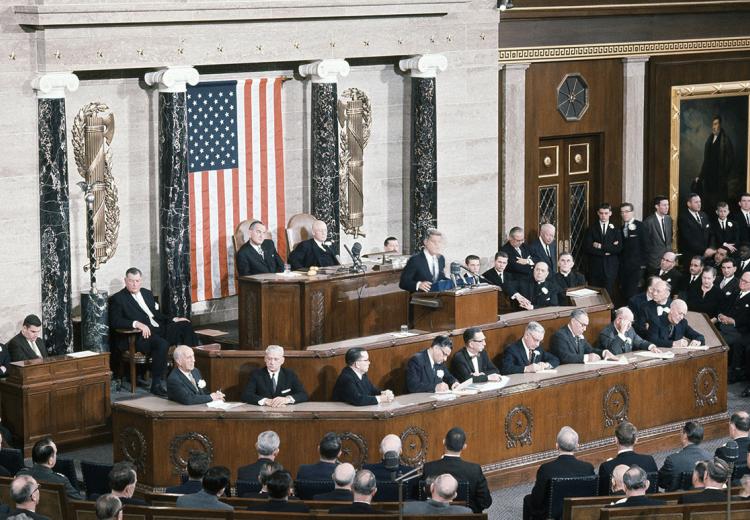“From Time to Time”: Presidents and Communicating with the Public

President John F. Kennedy delivers his State of the Union Address on January 14, 1963.
"He shall from time to time give to Congress information of the State of the Union and recommend to their Consideration such measures as he shall judge necessary and expedient."
— Article II, Section 3 of the U.S. Constitution
The U.S. Constitution states that the President of the United States shall "from time to time" deliver an address to the Congress. The word "deliver" was interpreted differently from president to president, with George Washington doing so orally and in person, while Thomas Jefferson decided to have a letter delivered to Congress. Over time, however, presidents have needed and chosen to be in communication with the American public on a more regular basis. From telegraphs to television to Twitter, how, why, and when presidents address the nation and global community has changed across U.S. history. This lesson examines the messages and mediums used by presidents and asks students to engage in point of view and change over time analyses as part of their evaluation.
Guiding Questions
Why do presidents deliver a State of the Union Address?
How have changes in technology affected how presidents communicate with the public and how the public communicates with a president?
To what extent do presidential addresses provide opportunity to develop civic and media literacy skills?
Learning Objectives
Analyze presidential addresses in order to create inquiry questions for research and discussion.
Analyze print and digital media sources to interpret motivations, messaging, and audience for presidential addresses.
Create a position statement on an issue that considers messaging, setting, means of communication, and audience.
